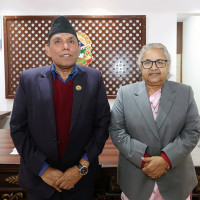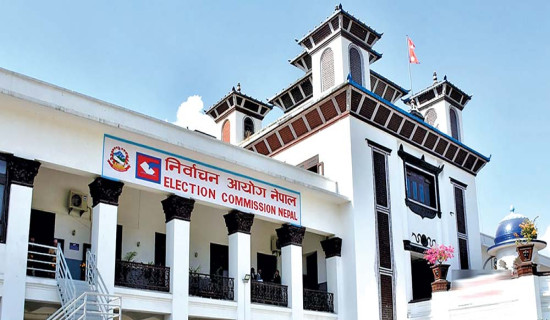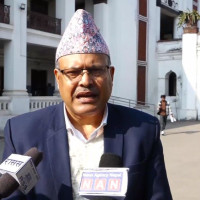- Tuesday, 30 December 2025
Gutka consumption rampant among youths, adults
Kathmandu, May 23: Small red-coloured packets are something that are visible almost everywhere in Nepal nowadays. Opened and empty red packets are seen in the streets while the unopened ones can be seen hanging in almost all grocery shops, be they big or small.
The red packets are of gutka and go by the names Bhola and Current. Gutka is a smokeless tobacco made by a mixture of tobacco, crushed areca nut (also called betel nut), spices, and other ingredients.
According to the World Health Organisation (WHO), smokeless tobacco use is highly addictive and damaging to health as it contains many cancer-causing toxins and its use increases the risk of cancers of the head, neck, throat, oesophagus and oral cavity (including cancer of the mouth, tongue, lip and gums) as well as various dental diseases.
Speaking under the condition of anonymity, a local leader from Pathari Shanishchare Municipality of Morang district who had initiated door-to-door election campaign for a political party in the recent Local Election 2022, many youths and adults participating in the campaign continuously asked for Bhola due to which he had to carry several packets of it daily.
“Bhola and Current are what get sold mostly daily. Retailers also keep on re-stocking it because of high demand,” said Tek Nath Niraula, a grocery wholesaler in Pathari Shanishchare.
Niraula added, “Some buy less, some buy excess. But it seems almost every male consumes gutka nowadays.”
The data of Nepal Demographic and Health Survey (NDHS)-2016 shows that use of any type of smokeless tobacco was much higher among men (40 per cent) than among women (three per cent).
According to Niraula, those leaving the village, usually carry a large packet of Bhola or Current, as per their preference, so that they wouldn’t have to struggle while at a new place.
“While at the village, I buy around a dozen packets of Bhola a day which costs around Rs. 50. When I need to visit Kathmandu for official reasons, I carry a large packet because it might not be available there,” said a science teacher in a local secondary school of Pathari Shanishchare.
When asked why he consumed gutka despite being aware of its conse quences, the science teacher said, “It has helped me leave cigarettes. Now gutka has been my addiction and surprisingly I don’t want to quit it any time soon.”
In Barmajhiya, Saptari, a man in his 50s who runs a small grocery shop nearby a hotel along the East-West Highway, said, “Gutka is what men eat here. Travellers also seek it. It is turning as a major competitor for cigarettes.”
According to the shopkeeper, gutka is like a lifeline for many people residing in the Madhes Province.
The red saliva has also left ugly marks on the streets and public properties across the country as people spit rampantly after consuming gutka.
Several streets and places of Kathmandu, including bus-parks and bus-stops, can also be seen blanketed with red packets of Bhola and Current and other tobacco packets.
Health experts suggest that gutka consumption is the cause of different non-communicable diseases (NCDs) and request to get rid of the bad habit.
“The cases of cancer, including that of mouth and gums, have been increasing annually. Consumption of gutka and other tobacco products has been a challenge because it is still increasing despite interventions from government and health organsiations,” said Dr. Phanindra Prasad Baral, spokesperson at Epidemiology and Disease Control Division (EDCD) under the Ministry of Health and Population.
According to Dr. Baral, who is also the chief at NCD and Mental Health Section of EDCD, the government has been raising awareness through the National Health Education Information Communication Centre (NHEICC).
The WHO suggests several measures including monitoring tobacco use and prevention policies, offer help to quit tobacco, enforce ban on tobacco advertising, promotion and sponsorship and raise taxes on tobacco.
“The tobacco products have warnings of health consequences. The prices of the products have been increased annually. However, the number of consumers hasn’t stagnated, let alone decreased. We need to review our steps to reduce tobacco consumption in the country,” said Dr. Baral.



-original-thumb.jpg)













